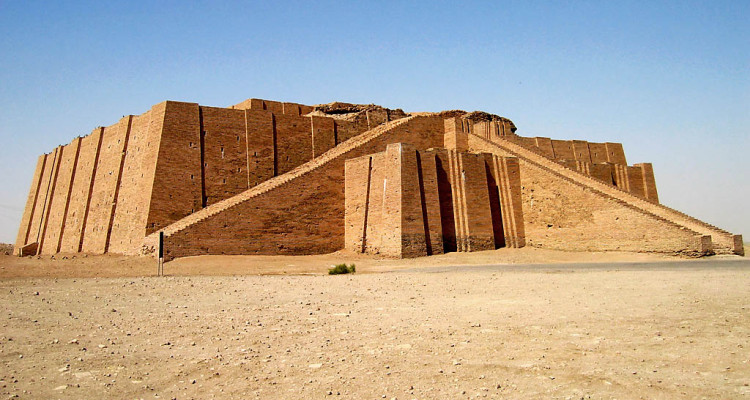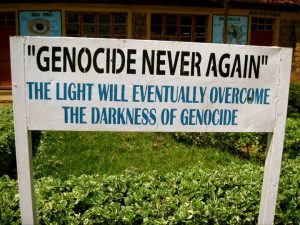The presence of temples as places where people nourish their faith and religion has existed for centuries since the beginning of the earliest civilizations. Since their foundations, temples of any religion have represented places where people could find spiritual and religious comfort. Besides this main function, temples have also played important roles in the management of their cities, impacting their societies in significant ways.

Temples in Ancient Mesopotamia, better known as “community temples,” were basically operated by priests and priestesses that were often younger relatives of the rulers. Their main role was to intervene with the gods for the fortune of their communities through prayers and offerings to their deities. In exchange, the community provided priests with food, drink, and clothing.1 Each temple was dedicated to a major deity, who was the main god of the city. Often the priests serving the temple might have been the former governor of that particular city-state.2 Like many religious organizations today, temple communities also provided help to the people in the community when in need. Temples, for example, used to take care of orphans, supply grain in time of famine, and provide ransom for people who might be captured in battle.3
Mesopotamian temples were not places where people particularly went to worship. They were thought to be the home of the city deity, and for this reason they were equipped like households. They were built with kitchens, tables (in the form of altars), living rooms, and the most important of the rooms, an inner sanctuary where a statue of the major deity stood in one of the building’s walls. Often, these temples used to have staircases to the roof, where rituals and offerings to the deity were performed (e.g. animal sacrifice to feed their god).4

Rams, sheep and doves used to be sacrificed to feed the gods. | Courtesy of National Geographic Spain
In hindsight, the role of temple communities was not limited to the city’s religious life, but they were also large socio-economic organizations.5 Temple communities in Mesopotamia also had an influence in the economy and social living of the cities. Among many of their functions, the operation and maintenance of irrigation systems was one of their highest priorities. They also controlled and managed the industry while developing and manufacturing products that later would be exchanged in foreign trade. Along with this, temples were extensive places for storaging goods and merchandise.6 The records priests and temple staff generated were so extended that some modern economic historians developed the conclusion that the Mesopotamian economy “was dominated by the temple, giving rise to the characterization of ancient Mesopotamia as a ‘temple-state economy.’”7 This was clear to see, since temples were also in charge of the finance of the city. They were in charge of collecting taxes, administrating a system of price control, regulating interest charges, financing foreign trade and legislating all private financial transactions. They also redistributed income by granting money to those in need, and often they also made loans to private individuals.8 Temples also played a role in legal matters and in maintaining social control. Marriages were performed; priests granted divorce, registered births, and administered the law.9
For the importance of their role as a major socio-economic organization as well as their role of mediators between the gods and the city, it can be concluded that Mesopotamian temples possessed a large power among the events happening in the daily life of the individuals living in a particular city. Maybe without the temples, it might have been more difficult for the rulers of the city-states to carry out the functions that these religious organizations used to perform.
- Jerry Bentley, Herbert Ziegler, and Heather Streets Salter, Traditions & Encounters: A Brief Global History Volume 1, 4 edition (McGraw-Hill Education, 2015), 15. ↵
- Richard L. A. Sterba, “The Organization and Management of the Temple Corporations in Ancient Mesopotamia,” The Academy of Management Review 1, no. 3 (1976): 16. ↵
- Bentley, Ziegler, and Streets Salter, Traditions & Encounters: A Brief Global History Volume 1, 15. ↵
- Ronald Wallenfels, World Eras – Vol. 8, Ancient Mesopotamia (Detroit: Gale, 2004), 162. ↵
- Sterba, “The Organization and Management of the Temple Corporations in Ancient Mesopotamia,” The Academy of Management Review, 17. ↵
- Sterba, “The Organization and Management of the Temple Corporations in Ancient Mesopotamia,” The Academy of Management Review, 18. ↵
- Wallenfels, World Eras – Vol. 8, Ancient Mesopotamia, 161. ↵
- Sterba, “The Organization and Management of the Temple Corporations in Ancient Mesopotamia,” The Academy of Management Review, 19. ↵
- Sterba, “The Organization and Management of the Temple Corporations in Ancient Mesopotamia,” The Academy of Management Review, 19. ↵



61 comments
Cherice Leach
Wow! How interesting is it to know temples were used for other things aside from religion! I would have never guessed that temples were used for the economics of the ancient people. It’s also interesting to note that the priests and priestesses acted as mediators between the Gods. You would wonder how someone could be chosen to do such a job. It must have been an honor to run one of those places back then!
Aaiyanna Johnson
They related the temples so close to their culture and way of life. The anthropomorphic qualities they believed the gods to be in that they built kitchens is amazing. They kept the priests and priestesses within their family, or royalty. Which could mean they thought the rich, or royalty to be closer to the gods; deities. There are some similarities between there ways and the Vatican’s.
Ezequiel De La Fuente
Good job at sharing so much information in just one article! Before reading this article I just thought that temples were used for worship and to house the higher dead, like the pyramids. Little did I know they were used for so much more. They’re so much similar to the society of that we have today, in their own way. If anything, I imagine the temples of this time were a place where one could say the “white house” meets the “church.”
Rebekah Esquivel
I always thought that temples were a place only for worship. By reading this article I learned that they were more like homes and were places were so many other parts if life. I also learned that they had a big part with the economy as well as social living in Mesopotamia. Another thing that stuck out to me was that their were priestesses in that time. This is surprising to me because women are not seen as priests in todays society and it is rarely seen. That just goes to show how gender roles and equality has changed over time. Very interesting article and a great read.
Thomas Fraire
The roles if temples in Mesopotamia was awesome. I think its really cool how these people got to grow in faith and spend massive amounts of time together, bonding threw meals and community organizations. Its also really cool how these temples function as basically the Swiss army knife to their everyday lives. The ate, traded, worshiped,and socialized in one mutual location which must’ve been really cool to be able to have that because the sense of community in a city would be really cool, and its just not something that existed within our current society.
Alexis Renteria
I like many others thought that these temples in Ancient Mesopotamia would have been used for worshiping but to my surprise they are used for many other reasons. Its very obvious where most of todays church’s got their ideology from. Most church’s today also help out people that are in need of shelter or if theyre in a financial crisis. Overall you do a well job of emphasizing the importance of temples in ancient Mesopotamia and the many things that they were used for.
Maria Callejas
This is a very interesting article! I must say this was a learning experience for me. I thought a temple was nothing more than a place for religious practice. But no, thanks to your fact ridden writing I now understand the crucial role temples played in early civilization, being the head of almost every civil responsibility. Your usage of quotations reinforces this point. That is shown when you said, “was dominated by the temple, giving rise to the characterization of ancient Mesopotamia as a ‘temple-state economy.” Also, great usage of pictures. Great job!
Alexandria Martinez
I always knew that temples were important for religious reasons, however, I never knew that they were also very important for other things. It was very interesting to learn all the different ways that the temples were incorporated into the lives of the city-states, it was also nice to know that the temples were created like houses for their gods. Very well written article as well as very informative, I enjoyed it very much.
Samuel Sanchez
This was an interesting article. I always thought in ever society temples were always used for praise and worship but it was much more than that in Mesopotamia. It was amazing how they provided shelter for the orphans. I never would have saw a temple as a community function but it provided so much for the people in the society. Without it, Mesopotamia probably wouldn’t have been the same. Overall amazing article. Keep up the good work.
Teresa Valdez
I found it really interesting that temples played such a huge role in the function of Mesopotamian cities. When I think of religious buildings like temples, I associate it with the deity. The article proves that these truly had a “community” function in Mesopotamian society by managing economic aspects as well. This article seems like it was well researched. Well done!